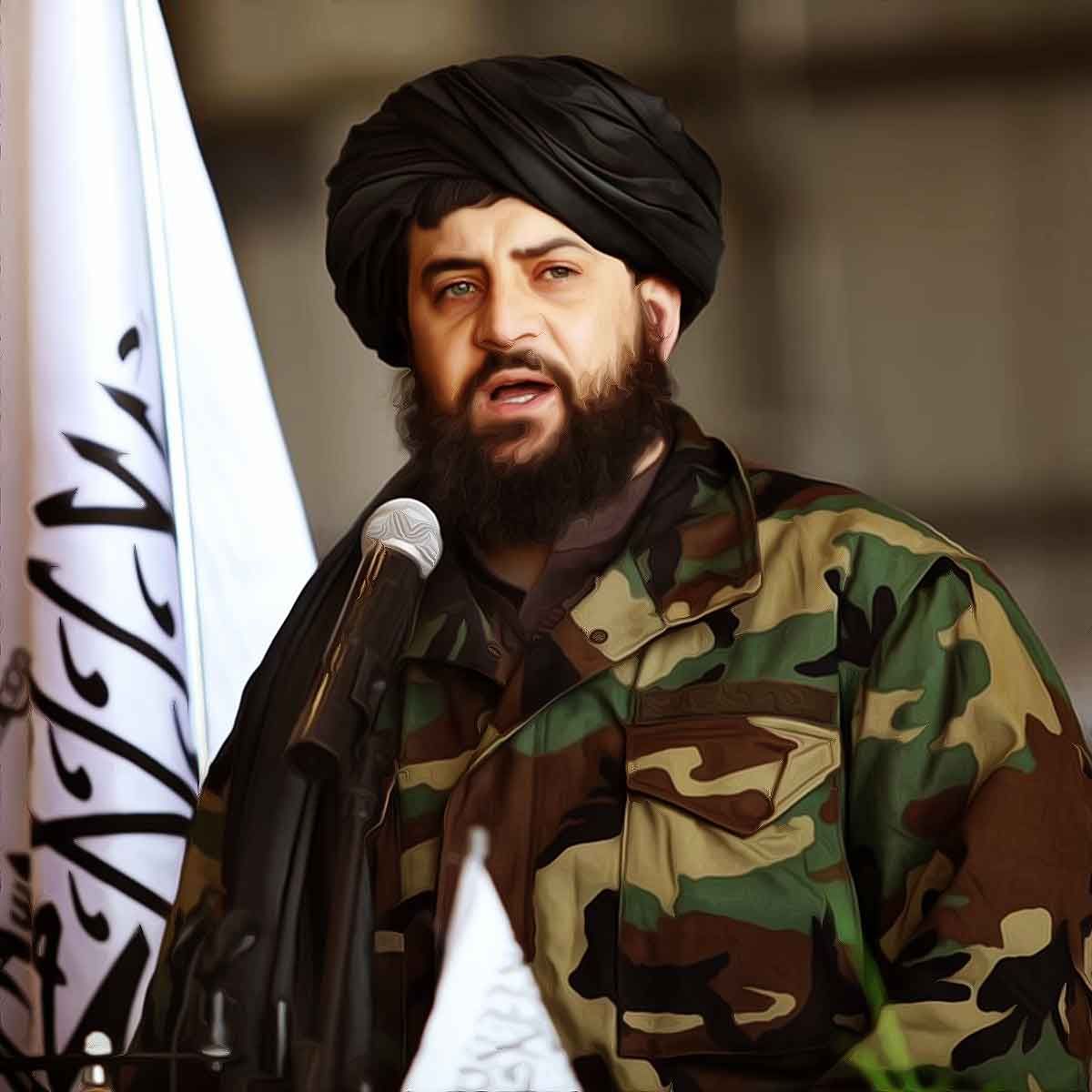MORE COVERAGE
Twitter Coverage
Satyaagrah
Written on
Satyaagrah
Written on
Satyaagrah
Written on
Satyaagrah
Written on
Satyaagrah
Written on
JOIN SATYAAGRAH SOCIAL MEDIA
‘La ilaha illallah muhammadur rasulullah”: Muslim BTech student, Lareb Hashmi, attacks a Hindu bus conductor with cleaver over ‘blasphemy’, shouts "We are ready to die for Prophet", inciting public uproar and leading to a dramatic police encounter, arrest

In a shocking development from Uttar Pradesh's Prayagraj, a 20-year-old Muslim engineering student, Lareb Hashmi, has been implicated in a violent attack on a city e-bus conductor. This unsettling incident, which took place on Friday, has drawn considerable attention due to the severe nature of the assault and the subsequent actions of the assailant.
|
"By killing the conductor, I have avenged the insult of Prophet Muhammad," confessed Hashmi in a video that has since gone viral on social media. This declaration, coming from a young student, is particularly alarming and raises several questions about the underlying motives and the circumstances that led to such an extreme act.
The confrontation between Hashmi and the bus conductor, Harikesh Vishwakarma, reportedly stemmed from a dispute over the ticket price. However, the situation rapidly escalated, culminating in Hashmi attacking Vishwakarma with a chopper, a type of sharp knife. This brutal assault left Vishwakarma with serious injuries, particularly to his neck, highlighting the intensity of the altercation.
This incident is not just a mere altercation but a reflection of deeper issues. Hashmi, a first-year engineering student, taking such a drastic step indicates a concerning blend of youth aggression and religious sentiments being triggered. It underscores the need for addressing not only the safety concerns in public spaces but also the broader societal factors that may contribute to such incidents.
The Prayagraj Police have identified Hashmi as the assailant, and the case has garnered widespread attention, partly due to the nature of his confession and the religious overtones attached to it. This incident serves as a stark reminder of the volatility of public discourse and the potential for personal disputes to escalate into matters of serious concern.
As more details emerge, the focus will likely shift to understanding the motivations behind Hashmi's actions and the broader implications for communal harmony and public safety. The incident has already sparked discussions and debates across various platforms, reflecting the societal impact of such occurrences.
Following the harrowing attack on the bus conductor in Prayagraj, the assailant, Lareb Hashmi, took refuge in a nearby college campus. This move marked the beginning of a series of events that further intensified the gravity of the situation. Hashmi, seemingly unshaken by his actions, proceeded to record a video within the college premises, a move that would soon cast a wider net of attention and controversy over the incident.
|
In this unsettling video, which Hashmi boldly uploaded on social media, he is seen confessing to the crime. But it's not just a mere confession; it's laced with accusatory tones against the conductor. "Modi-Yogi will rule here but only Mustafa rules," he proclaims, invoking the names of prominent Indian political figures Prime Minister Narendra Modi and Yogi Adityanath. This statement, layered with religious and political undertones, adds a complex dimension to the incident, suggesting motivations that go beyond a mere altercation.
Hashmi's video further complicates the narrative as he is seen brandishing the knife used in the attack, a chilling reminder of the violence that had just transpired. His reference to "insulting the Prophet Muhammad" as the reason for his actions not only provides insight into his mindset but also sparks a broader conversation about the intersection of personal beliefs, religious sentiments, and public safety.
The subsequent arrest of Hashmi by the police, however, marks a swift response to the incident. The encounter leading to his arrest was intense, resulting in Hashmi being shot in the leg. This quick action by the authorities brings a certain level of closure to the immediate threat but opens up several avenues for discussion and analysis.
This incident, now a blend of a violent crime and a religious-political statement, captured in both a self-incriminating video and footage of Hashmi fleeing the scene, underscores the multifaceted nature of such acts of violence. It brings into focus the role of social media in amplifying personal actions into public spectacles and the rapid response of law enforcement in such high-stakes situations.
Both the conductor and Hashmi's critical condition following the encounter serves as a stark reminder of the real human cost of such incidents. The layers of complexity surrounding this event – from the violent act itself, the religious and political statements made, to the rapid police action – paint a vivid picture of the challenges faced by society in addressing and understanding such multifaceted incidents.
|
The aftermath of the brutal attack on a bus conductor in Prayagraj continues to unravel, revealing layers of actions and reactions that have captivated public attention. Central to this unfolding story are videos that have emerged online, further illuminating the shocking events.
One such video chillingly captures the assailant, Lareb Hashmi, fleeing the scene after the attack. This footage not only serves as a visual testament to the chaos of the moment but also starkly contrasts with another video that has gone viral: Hashmi's own confession. In his self-recorded video, Hashmi unabashedly admits to the crime, adding a layer of complexity to the narrative with his accusations of blasphemy and religiously charged statements.
Mangala Yadav, the bus driver, offers a firsthand account of the sudden and terrifying ordeal. "Suddenly there was an attack inside the bus," he recalls, painting a picture of the abrupt disruption of a normal day. His quick thinking in the aftermath, taking the injured Vishwakarma to the hospital, underscores the urgency and severity of the situation. Yadav's actions reflect a human response to an unexpected crisis, highlighting the everyday heroism that often emerges in times of distress.
The Prayagraj Police's role in this incident is noteworthy. Their swift action led to the apprehension of Hashmi from within the college where he had sought refuge. However, the narrative takes a dramatic turn when, during a weapon recovery operation, Hashmi allegedly fires at the police. This escalation resulted in the police retaliating, culminating in Hashmi being shot in the leg and his subsequent arrest. This tense exchange underscores the dangers law enforcement officers often face while apprehending suspects, especially in volatile situations.
|
Hashmi's hospitalization for the bullet injury marks yet another chapter in this unfolding story. The incident, rife with violence, religious and political implications, and a dramatic police encounter, not only highlights the complexities of law enforcement and public safety but also raises questions about the societal and communal tensions simmering beneath the surface.
The attack, a violent and unsettling event, occurred on a seemingly ordinary Friday morning around 9:30 am, transforming an everyday commute into a scene of chaos and fear.
Lareb Hashmi, the accused and an engineering student, is reported to have launched an unprovoked assault on bus conductor Harikesh Vishwakarma. The attack took place inside an e-bus traveling from Shantipuram Phaphamau to Raymond of Naini, near the college gate where Hashmi resided. Armed with a chopper, Hashmi inflicted severe injuries on Vishwakarma, notably to his neck and hand, in an episode that left the bus interior splattered with blood.
The details surrounding the motive for this brutal assault are murky and varied. Some local reports suggest a deeply disturbing scenario where the altercation began with Hashmi's alleged attempt to molest a girl on the bus. In this narrative, Vishwakarma's intervention to protect the girl ostensibly triggered Hashmi's violent response.
However, other accounts present different perspectives. Some reports indicate a disagreement over bus fare as the catalyst for the attack. In a more charged version, it's claimed that Vishwakarma's mockery of Islam provoked Hashmi's aggressive response. These differing reports not only demonstrate the challenge of establishing a clear narrative in the immediate aftermath of such incidents but also reflect the various societal and personal factors that can contribute to public acts of violence.
|
This incident, therefore, is not just a story of a physical attack; it's a complex interplay of individual actions, societal tensions, and the struggle to ascertain the truth in a situation with multiple layers and perspectives. As investigations continue, the challenge remains to piece together the different accounts to form a comprehensive understanding of what led to this tragic and violent episode in Prayagraj.
In the immediate aftermath of the violent attack on the bus conductor in Prayagraj, the assailant, Lareb Hashmi, made a hasty escape from the scene. Witnesses described a dramatic exit, with Hashmi brandishing the weapon used in the assault and voicing religious slogans. This chaotic departure was not only witnessed by those present but also captured and immortalized by Hashmi himself in a video confession that he later disseminated on social media.
Hashmi's video is not just a confession; it's a chilling testament to his mindset at the time. In the video, he explicitly acknowledges stabbing the conductor and even expresses a belief that his victim might succumb to the injuries. "He termed the bus conductor as 'Kaafir' in his video and showed no remorse for his acts," a statement that starkly highlights the absence of regret or empathy in his actions.
The police's apprehension of Hashmi near Chandi Port, a few kilometers from the scene, followed a tense encounter on Friday evening. During their investigation, as they sought to recover the weapon used in the attack, Hashmi escalated the situation by attacking them with an illegal pistol. This aggressive act forced the police to respond in self-defense, resulting in Hashmi being shot in the leg.
Deputy Commissioner of Police (DCP) Abhinav Tyagi of Prayagraj's Yamunanagar area provided further details about the incident and the accused. "The accused was arrested by the police and a case was registered under relevant sections of the Indian Penal Code," said DCP Tyagi, emphasizing the legal proceedings underway. He also shared insights into Hashmi's background, noting his status as a first-year student at United Engineering College and providing information about his family and residence.
This incident, with its layers of violence, religious overtones, and dramatic police action, has not only shocked the local community but also raised significant concerns about public safety and communal harmony. The investigation's ongoing nature suggests that more details are likely to emerge, potentially shedding light on the motivations and circumstances that led to this tragic series of events. As the community grapples with the aftermath of this attack, the focus remains on understanding the broader implications of such incidents and preventing their recurrence in the future.
 Support Us
Support Us
Satyagraha was born from the heart of our land, with an undying aim to unveil the true essence of Bharat. It seeks to illuminate the hidden tales of our valiant freedom fighters and the rich chronicles that haven't yet sung their complete melody in the mainstream.
While platforms like NDTV and 'The Wire' effortlessly garner funds under the banner of safeguarding democracy, we at Satyagraha walk a different path. Our strength and resonance come from you. In this journey to weave a stronger Bharat, every little contribution amplifies our voice. Let's come together, contribute as you can, and champion the true spirit of our nation.
 |  |  |
| ICICI Bank of Satyaagrah | Razorpay Bank of Satyaagrah | PayPal Bank of Satyaagrah - For International Payments |
If all above doesn't work, then try the LINK below:
Please share the article on other platforms
DISCLAIMER: The author is solely responsible for the views expressed in this article. The author carries the responsibility for citing and/or licensing of images utilized within the text. The website also frequently uses non-commercial images for representational purposes only in line with the article. We are not responsible for the authenticity of such images. If some images have a copyright issue, we request the person/entity to contact us at satyaagrahindia@gmail.com and we will take the necessary actions to resolve the issue.
Related Articles
- Demanding Fast-Track Trial against Mohammed Arif who slit throat of minor girl Prachi Rana, thousands took to Streets In Himachal, protest ‘Love Jihad’ Cases: Visuals show protesters demanding capital punishment
- In the interpretation of Islam, any pictorial representation of Prophet Muhammad is an anathema, something that is strictly prohibited and even regarded as ‘blasphemy’ and calls for beheading
- In another shocker, Supreme Court quotes 'every sinner has a future' and commutes death sentence of Mohd Firoz for rape & murder of 4-year-old girl: Child brutally assaulted, two teeth broken while smothering after rape
- Angered by the rejection of his love proposal a mohammedan Azhar slit the throat of a 23-year-old Hindu girl Anusha in Hanamkonda, Hyderabad: Similarly, Asif Mohammed murdered Prachi Rana in Himachal
- Islamist gunmen stormed riding motorcycles attacked predominantly Christian villages, 80 killed, more than 60 abducted and over 115 homes were razed
- "देखना बाबूजी, पुलिस बनूंगी एक दिन": Saloni's journey to Daroga exam turned tragic, a mobile snatcher pushed her from a moving train, severing her right leg, later she succumbed to her injuries, leaving a family devastated, Shaukat Ali & Jabrej arrested
- Mohammedan Irfan Siddiqui, who was serving jail time for raping a Dalit woman on his release comes out and kills her brother Hiralal Gujrati: Hiralal’s wife told, “My husband was very scared. He wanted to leave Delhi"
- Neeraj Prajapati, part of the pro-CAA tricolour march in Jharkhand was killed by a frenzied Muslim mob with an iron rod: Two years later his family still awaits justice
- Online Syndicate of radical Islamists that was targeting people for demanding justice for the slain Hindu Youth is exposed by Social Media user: Kishan Bharwad murder case
- Prachi Rana, a 15-year-old girl killed in her house at Pratap Nagar in Amb for resisting molestation by Newspaper hawker Asif Mohammad: Accused arrested for silting throat, police urge people not to give it ‘communal’ colour
- In a significant verdict, Delhi's Tis Hazari Court sentenced Akbar Ali, Shehnaz Begum, & Mohammad Salim to life for the murder of Ankit Saxena, with each being fined Rs 50,000; were convicted by the court on Dec 23, 2023, almost 6 years after the incident
- Thousands of Germans forced to flee own country and take refuge in Paraguay to escape extreme hostilities from Muslim migrants: Sharia law in many parts of England, London becoming “capital of Islamist Caliphate”
- Murder case of Hindu Youth Kishan Bharwad took a far more sinister turn when a Pakistani political party link in the case is revealed: Hindus protest in Gujarat erupts
- Maulana Qamar Gani Usmani detained by Gujarat ATS in murder case of a Hindu Youth Kishan Bharwad, had incited prime accused to kill Kishan for ‘blasphemy’
- Afghan MMA fighter Abdul Badakshi along with mob of Afghan supporters attempts to murder an Indian fighter Srikant Sekhar in Delhi, happened after Seth Rosario won fight from Badakshi upsetting his supporters, Badakshi has a fake Aadhar and dual passport



























